 Rotterdam 2002
Rotterdam 2002
 Geneve 2003
Geneve 2003
 Geneve 2003
Geneve 2003
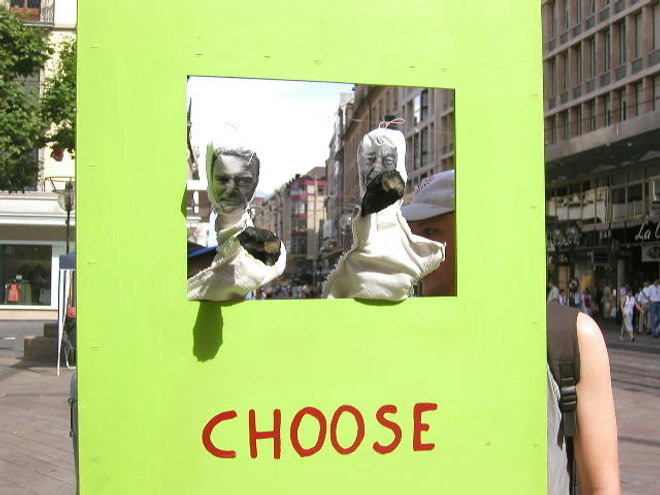 Geneve 2003
Geneve 2003
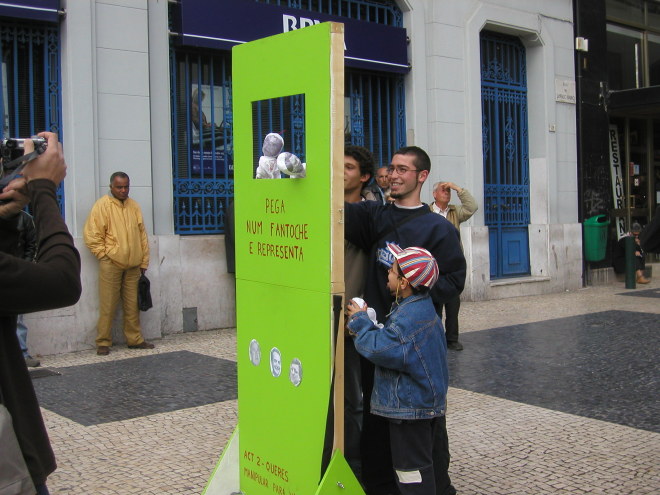 Porto 2003
Porto 2003
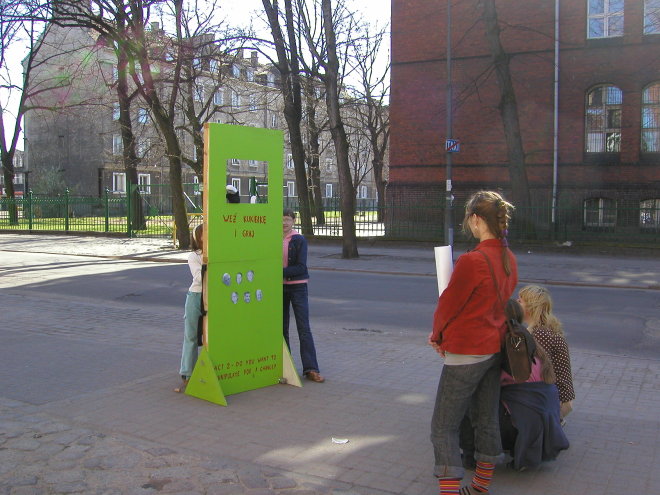 Last News, Laznia, Gdansk, Poland 2007
Last News, Laznia, Gdansk, Poland 2007
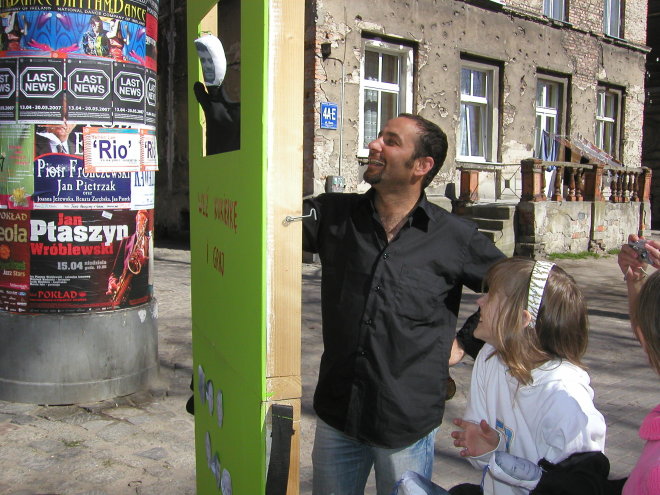 Last News, Laznia, Gdansk, Poland 2007
Last News, Laznia, Gdansk, Poland 2007
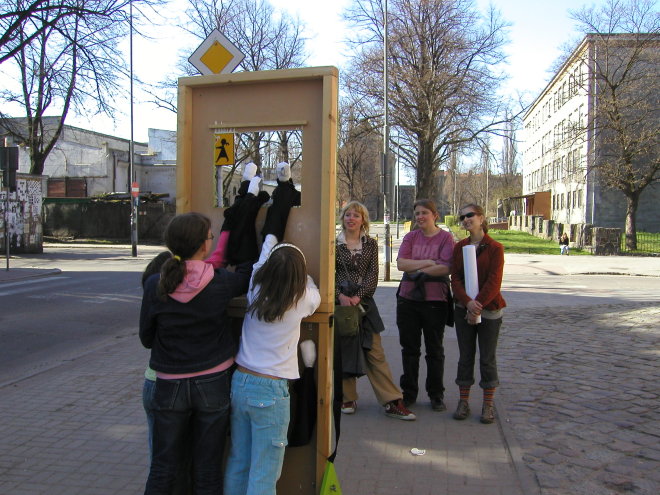 Last News, Laznia, Gdansk, Poland 2007
Last News, Laznia, Gdansk, Poland 2007
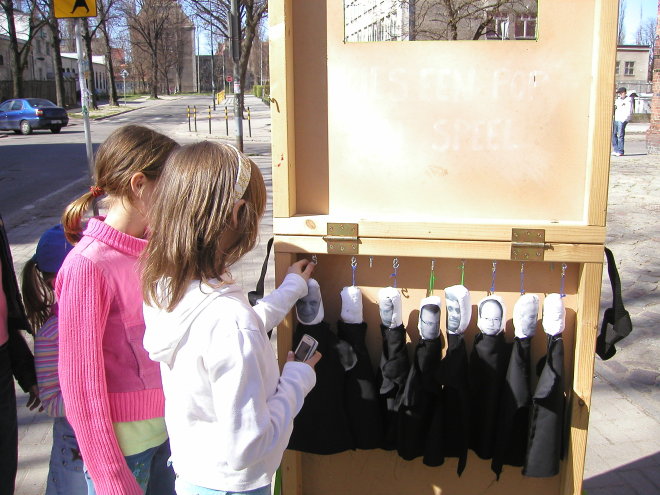 Last News, Laznia, Gdansk, Poland 2007
Last News, Laznia, Gdansk, Poland 2007
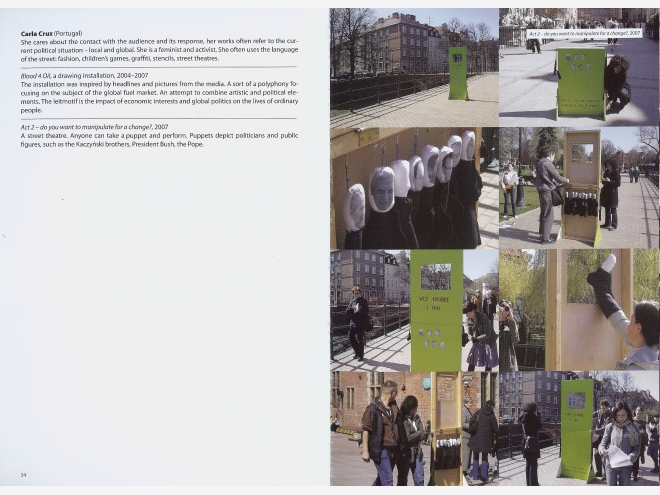 Last News, catalogue, Laznia Gdansk 2007
Last News, catalogue, Laznia Gdansk 2007
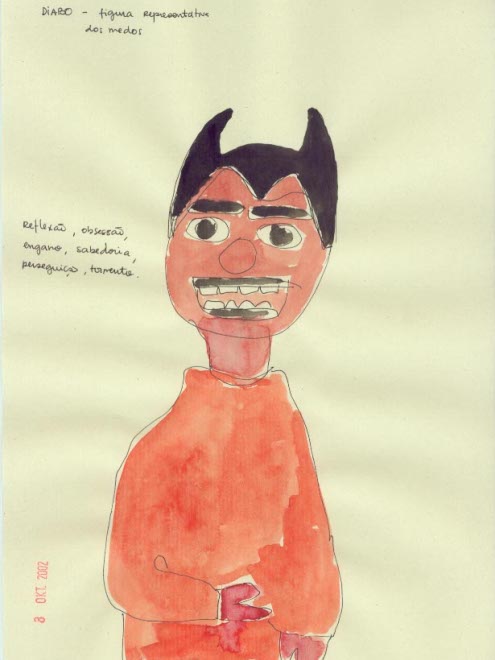 initial puppets
initial puppets
 initial puppets
initial puppets
 initial puppets
initial puppets
Can art lead people to have an impulse to act?
What I have experienced on staging ‘Act 2 – do you want to manipulate for a change?’
To think that art can provoke immediate change on society can be naïve, but not when the aim is to engage people in questioning the world we construct. My proposal with this kind of interactive puppet theatre was to use art strategies and creativity in public space at the service of passers-by.
First of all to promote questioning, doubt about our position in society, uncomfortable feelings by even imagining stepping out of the anonymity of the crowd and play in a puppet theatre, in the end to critically think, as citizens, about society structures. The small scale of my offer, ‘Act 2’, placed for a couple of hours, non announced, in the squares of a big city, (Rotterdam, and now Geneva) cannot claim to change society, only to attempt to arouse doubt in peoples’ mind by addressing them not as mere consumers of cultural products but as potential producers of culture in general. This is how I can claim to try to lead people to act. Question their position in society, giving them a platform to behave differently, this ultimately make’s the participant aware of their productive power, of their voice, that they might consider using it. Acting for themselves.
This hand puppet theatre like platform leads, through play, to the discussion of participation. Therefore I grant it a first interpretation line. Manipulation. “Do you want to manipulate for a change?” is my invitation. To manipulate the masters of the world, for a change. To experience the backstage of politics, decision-making, inverting roles and inventing new rules. Likewise for a change of the world, we have to break through this manipulative theatre, and walk our own paths, live our own choices, not the ones someone else’s chosen for us. Considering that traditionally, the public sphere was organized around a square and nowadays is telematique. People meet at the same time in from of the TV to watch the news,like Martha Rosler stated “The millions simultaneously watching televised football games. Those are signs of collective attention.” (Rosler quoted on foster, 1998, p.9). Hence, ‘Act 2’ was necessarily set in the public sphere. To challenge the pre-fabricated reality, that reaches us through the mass media that shape our perception of the world, our opinions and choices. Can we fight back, turn of the TV, do not read newspapers? Yes! Still these representations are spread all over the city. It is impossible to escape them and this would only alienate us more from each other. Therefore my response was not to insert my art on the media it self, to respond from within, but to reclaim real experiences against mediated ones, taking back like the Situationist proposed the power to dream a new society and reclaim the public domain.
To provoke and engage people into participation. In an utopian view – an active participation in social discussion; in reality – participation in manipulating hand puppets in public squares, that believe it or not is already a huge step to take. I am therefore conscious that this action is only a grain of sand on the desirable awakening, that could lead to the collective need for change, in a creative way, or I might say with art strategies re-imagining the world together.
I don’t attempt tot change directly the world only arouse questioning towards our behavior and the society that provokes it. Therefore the question is – ‘Can art be activist or only political’ considering that activism is striving for immediate change of a particular situation (look at the war issue we can comment on our powerlessness position as individuals in our society, where even 2 millions people together shouting the same words could not make themselves heard) political art on the other hand is aiming to a more deeper change in society, but also counting on long term effects.
Therefore the only achievement, since I cannot grasp the deeper effects of my platform, was to stir up a bit of thinking in public space. Which for me is already quite important, considering the lack of spontaneous, non commercial events performed on our so called public space. Realizing that it is also becoming more and more privatized, and taken over by rules and regulations instead being a place for exchange and dialogue between people.
I cannot say I am an activist, nor for my work to be of an activist nature, since I don’t have any agenda besides wanting as Guy Debord would say “A new life style”. To claim ‘Act2” as political is also difficult for me as I don’t make any clear comment on society itself.
But what I realized is that it is time to call for public participation in the democratic process, to demonstrate that we are all part of this system. A society polarized between the powerful and the powerless. Those who are heard and those who are silenced (W 27), at time that we see “the leaders” we put in power disregard massive demonstrations against their decisions it is time to find new tools to empower people to act. And this is the when the power of art as a critical tool has to come up and the artists can mediate this discontent by placing their tools and knowledge at peoples service. For me, always in a playful way.
2003 –SOIA –Geneva – Switzerland
